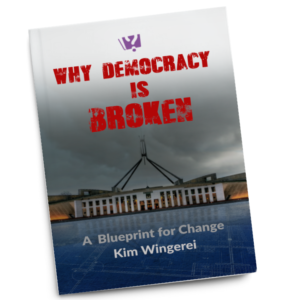The debate over the value of NBN Co is back in the headlines.
This was triggered by NBN Co’s offer in its latest Special Access Undertaking variation to cap its ability to recover losses it has made on its investment in building and operating the network. These losses are captured in a special regulatory account known as the Initial Cost Recovery Account or ICRA.
The Australian Financial Review quoted me in the article highlighted above as follows :
Former NBN chief technology officer Gary McLaren told AFR Weekend it did not make sense to reduce the cost recovery target without writing down its total value.
“I can’t understand how you would write down the ICRA [Initial Cost Recovery Account] and not the equity value,” he said.
Essentially the ICRA is an accumulation of losses, on a yearly basis, that NBN Co has incurred based on its:
-
-
- Unrecovered Cost – which is the amount that its actual revenue falls short of the revenue it would have needed if it was to have earned a commercial rate of return (ie. the risk-free interest rate plus 3.50%) on the assets it has prudently invested in (known as the Regulated Asset Base), plus
- The commercial return (again the risk-free interest rate plus 3.50%) on its previous year’s ICRA balance, as it would have had these amounts to invest if not for the losses it had incurred.
-
The ICRA’s purpose is to allow NBN Co to recover its initial losses incurred during its start-up phase at a later stage, but no more than what a non-monopoly business would be able to earn. This is a key way of regulating NBN Co so that it doesn’t earn excessive profits (or what economists call monopoly rents).
NBN Co has estimated that as of the end of this financial year (2022/23) the accumulated losses in the ICRA will be $44 billion.
This is an increase of approximately $5 billion from its last financial year (2021/22), highlighting that NBN Co is still not generating anywhere near enough revenue to give it a commercial return and recover the opportunity cost from all its incurred losses to date.
NBN Co has now offered to cap the ICRA account at $12.5 billion – a reduction of $31.5 billion from its 2022/23 estimate.
However, the ICRA would have likely continued to grow for some time if it weren’t capped so the actual reduction will be significantly higher as each year goes on.
Why does capping the ICRA necessitate a write-down?
The government’s equity stake in NBN Co is $29.5 billion, with this funding being provided by both Labor and Coalition governments up until 2017/18. NBN Co has raised an additional $24.8 billion of debt which has been provided by both the government and the private sector.
This represents funding injections of $54.3 billion, with this expected to rise to $57 billion in 2023/24 according to the 2020 Corporate Plan.
The new Labor Government has committed to providing an additional $2.4 billion over the next four years. Assuming this is in addition to the forecast financing flagged in the 2020 Corporate Plan this adds up to a total funding injection of $59.4 billion of which the government equity component is $31.9 billion.
NBN Co’s Regulatory Asset Base (RAB) as of FY22 was $29.3 billion which is essentially the capital expenditure invested in its network less depreciation (adjusting for inflation).
As mentioned above, NBN Co is only able to earn a commercial return on this part of the funding it has received so far, except to claw-back the stored losses held in the ICRA account. The RAB changes as NBN Co invests in its network (capital expenditure) and accounts for the depreciation of its network assets. It also increases in line with inflation.
As NBN Co seeks to invest approximately another $5 billion over the next four years in its network it would be expected that this asset base will essentially remain flat as capital expenditure plus inflation approximately equals the amount of depreciation.
Based on these assumptions we can attempt to construct how NBN Co’s funding in 2025 maps to its Regulatory Asset Base.

The above graph highlights that the RAB is approximately the same as the Group Debt that NBN Co is estimated to be carrying in 2025. The funding NBN Co has received that is not part of the RAB (Non RAB in the above graph) will be approximately equal to the government’s equity.
NBN Co can only earn a commercial return on the RAB amount – not the Non RAB amount. The ICRA is the mechanism by which returns can be obtained on the non-RAB amount of funding that has been provided.
NBN Co must pay interest on the Group Debt and this interest must come from the Return on Capital that NBN Co is permitted to make on its RAB.
So the critical issue for NBN Co is what interest rate it will pay on its Group Debt as this will be approximately the same as the RAB.
If it pays an interest rate approximately equal to the commercial return it is allowed to make (risk-free interest rate plus 3.5%) then it will not be able to make any return to its equity holders (ie. the government), except for the amount it is able to claim from the ICRA once it is profitable. Previously this amount was growing as NBN Co’s losses mounted, but now under the new SAU offer, it will be capped at $12.5 billion.
The Productivity Commission has just completed an exhaustive analysis of NBN Co’s debt funding in its investigation of a complaint regarding the competitive neutrality policy that should apply to government-owned businesses.
It found that NBN Co is not currently complying with the competitive neutrality provisions because its interest rate on its private debt has been priced at a higher investment grade due to government ownership.
The advantage obtained by NBN Co is in the order of 3.2 to 4.2% in interest terms and should involve NBN Co paying the government approximately $320 million per annum to the government for this benefit on an annual basis.
As discussed above the maximum return NBN Co can earn on the RAB is the risk-free rate plus 3.5% under the offered SAU. So it can be seen, that if NBN Co was paying a fair rate of interest on its debt of 3.2 to 4.2% above the investment grade rates (ie. AA and BBB-rated debt) then it would have no return available for its equity holders.
Of course, if the government ignores its own competitive neutrality policy, NBN Co could continue to pay an interest rate that is less than the risk-free rate plus 3.5%. This saving in interest could then be used to provide a return on equity. But this would only be a very small return on the government’s equity stake.
As a consequence, it can be seen that the value of the equity will mainly consist of the amount that is recoverable from the ICRA account.
If NBN Co was able to increase its RAB through more investment that was funded by equity then it may be able to make a return on that additional equity. But not on the sunk equity which is essentially lost if the ICRA account is capped.
Based on this analysis, NBN Co’s equity value would be approximately $12.5 billion if one did not factor in the time value of money because any returns on the equity are far into the distant future.
The responsible department for NBN Co (Department of Infrastructure, Regional Development and Communications) has adopted a fair value of $19.7 billion in its 2021/22 annual report (see page 204). This was however before the lodgement of the revised SAU by NBN Co to the ACCC with the offer to cap the ICRA.
The Productivity Commission in the above-mentioned report in commenting on DTIRDC’s fair value figure of $19.7 billion indicated that the valuation would be below $18.4 billion assuming NBN Co was required to comply with the competitive neutrality policy.
The Politics of an NBN Co writedown
Labor has previously criticised the then Chairman of NBN Co, Dr Ziggy Switkowski, for claiming that he has ‘figures’ which substantiate a valuation for NBN Co of $50 billion in January 2019. This valuation presumably was at an enterprise level and included the equity and debt funding provided to NBN Co, implying that the government’s equity stake was still worth $295 billion.
At the time Dr Switkowski highlighted the uncertainties around technology and advised waiting for the completion of the build phase for NBN Co before considering a write-down.
These can and should be debated but attempts to value the enterprise probably are better done in the early 2020s once the construction and customer migration phase is over and the NBN morphs into a more typical and profitable telco company.
The then Finance Minister, Senator Cormann, said there was ‘no argument’ and in any case, it was not up to the government and any write-down needed to be done ‘in accordance with the accounting standards, and subject to an independent audit.”
The lodgement of a revised SAU with the ACCC which effectively eliminates the ability to claim NBN Co’s accrued losses would seem to make the write-down only a matter of time.
Of course, there are other threats to NBN Co other than the capping of the ICRA balance. NBN Co has included a detailed analysis of these threats in its new SAU and I will be analysing these in an upcoming post.
The post Surely the NBN Co writedown is nigh appeared first on Gary McLaren.



